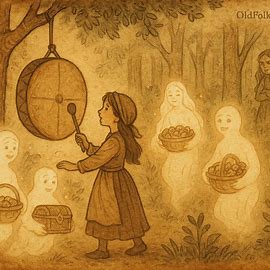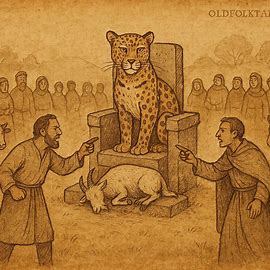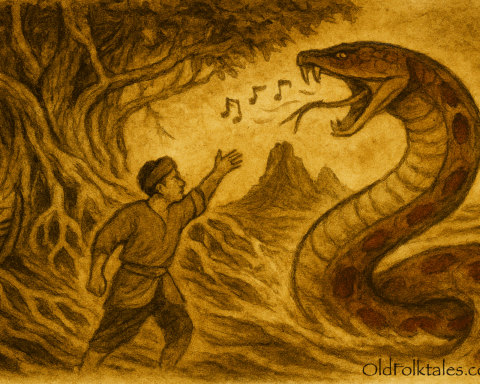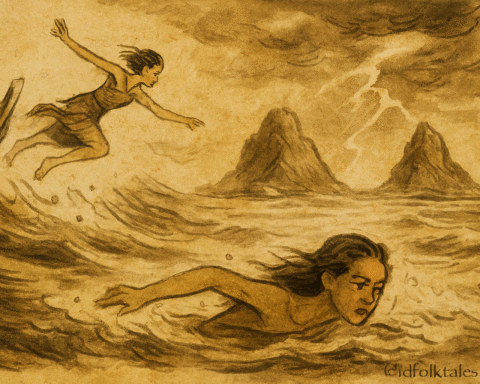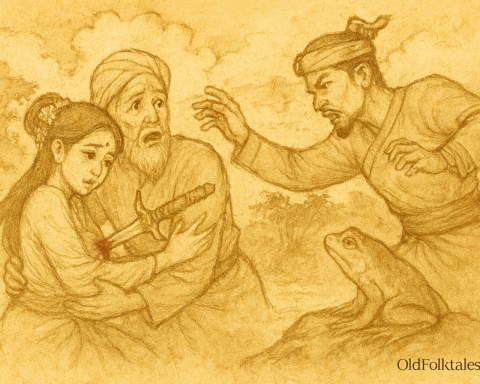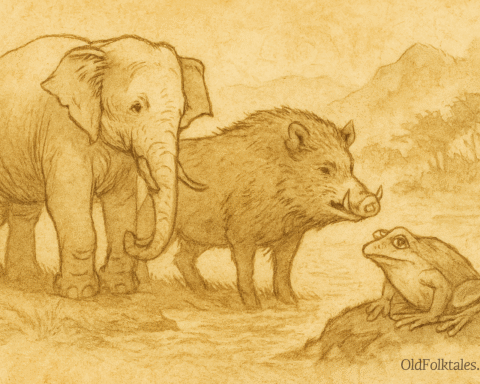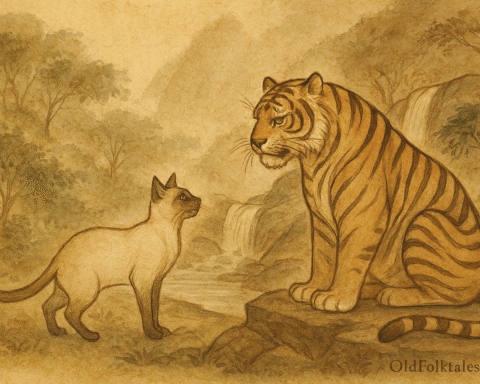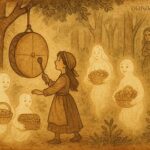Long ago, in a quiet town in Senegal, there lived two brothers whose lives were marked by bad choices. They gambled, wasted their money, and borrowed endlessly from others. Their creditors grew tired of waiting for repayment and began to hound them every day. Unable to bear the shame and the pressure, the brothers fled into the forest.
They thought freedom would bring peace, but instead they fell into darker ways. They became highway robbers, hiding along forest paths to steal from travelers. Yet, even as they filled their hands with stolen goods, their hearts were heavy. At night, they whispered to each other.
“This is not the life we want,” the elder brother confessed, his voice trembling. “We have dishonored our family and lost our peace.”
The younger brother nodded. “Let us change. We will build a farm, work honestly, and repay our debts. Little by little, we can set things right.”
The two brothers agreed. With renewed hope, they cleared a patch of fertile land and planted rows of corn seeds. The soil was rich and dark, and the brothers imagined golden stalks swaying in the wind, each one bringing them closer to freedom from debt.
But destiny was not kind. That very night, a hungry bushfowl wandered into their field. Scratching with its claws, it uncovered the freshly planted seeds and swallowed them eagerly. By morning, the field was bare.
When the brothers saw the destruction, despair filled them. “All our work is wasted,” the elder cried. “Who has stolen our future?”
They searched the ground and soon found the tracks of the bushfowl. They set a trap and, by evening, caught the guilty bird.
The brothers glared at it with anger. “Because of you, we cannot pay our debts. From this day, all that we owe belongs to you.”
The frightened bushfowl trembled. Saddled with a burden too heavy for its wings, it flew to a silk cotton tree. There, it laid eggs, hoping that its chicks would grow and be sold to repay the debts. But fate intervened again. A fierce storm swept across the forest. A great branch of the tree crashed down, smashing the eggs.
The bushfowl wept bitterly and cried out, “These debts are no longer mine. They belong to you, O tree, for you have destroyed my hope.”
The silk cotton tree was alarmed. “How can I carry such a burden?” it moaned. To free itself, the tree produced more and more fluffy silk cotton, thinking it could be gathered and sold.
One afternoon, an elephant passed by. He plucked the silk cotton to amuse himself, not knowing the weight of responsibility he was taking. The tree quickly declared, “Now the debts are yours, great elephant, for you have taken all my labor.”
The elephant sighed deeply, his heavy heart matching the weight of his body. Unsure how to repay such a debt, he wandered into the desert, where a hunter spotted him. The hunter, seeing the massive creature standing still, thought fortune had smiled on him. He raised his spear and struck.
As the elephant fell, he whispered to the hunter, “The debts are now yours.”
The hunter recoiled in shock. “I am poorer than the elephant. How will I repay this?”
Limping home in sorrow, he stumbled in the dark and tripped over a tree stump. He fell hard, breaking his leg. The stump, feeling the weight of his accident, declared, “The debts now belong to me.”
The following morning, a colony of white ants came to feed on the stump. As they chewed through its core, the stump gasped, “Now the debts are yours, for you have destroyed me.”
The ants were clever creatures. They gathered in a circle and held a council. “How will we manage this burden?” one asked.
“We must work together,” another replied. “Each will give what they can. With our contributions, we will buy linen thread, weave it, and sell it for profit. Only then can we pay the debts.”
So the ants worked. They spun linen with patience and skill, and each time their stock was ready, they laid it out to dry on the ant hills. When villagers passed by and saw the white cloth spread across the earth, they mistook it for something new.
“What is this soft white food?” they asked. They plucked it and tasted it, finding it delicate and nourishing. From that day on, the people called it mushrooms.
Moral Lesson of How Mushrooms First Grew
The story of how mushrooms first grew teaches that debts, burdens, and consequences cannot be easily escaped. They pass from one hand to another until they are finally transformed into something new. The folktale reminds us that responsibility must be faced with honesty and unity. Just as the ants worked together to create mushrooms, we too can turn hardship into blessings through cooperation and persistence.
Knowledge Check: How Mushrooms First Grew
What caused the two brothers to flee into the forest in the story of How Mushrooms First Grew?
They ran away because their debts and bad habits brought shame and constant harassment from creditors.How did the bushfowl become responsible for the debts in How Mushrooms First Grew?
It ate the seeds the brothers had planted, leaving them unable to repay their debts.Why did the silk cotton tree inherit the debts in How Mushrooms First Grew?
A storm broke its branch, smashing the bushfowl’s eggs, so the bushfowl transferred the burden to the tree.How did the debts eventually reach the ants in How Mushrooms First Grew?
The hunter fell on a stump, the stump passed the debt, and the ants inherited it after eating the stump.What clever solution did the ants create in How Mushrooms First Grew?
They contributed resources, bought linen thread, wove it, and sold it to pay the debt.What origin of mushrooms does the story of How Mushrooms First Grew explain?
It explains that mushrooms are like the white linen cloth spread on ant hills, transformed into food for people.Cultural Origin
This folktale comes from the Wolof people of Senegal.


